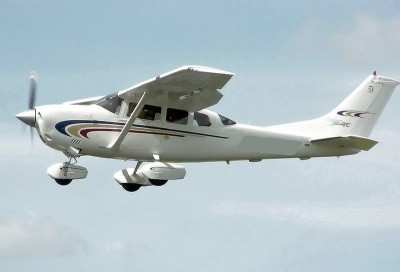Mon, Dec 17, 2012
In-Flight Fire Caused By V-Band Coupling Malfunction
The FAA has issued a Special Airworthiness Information Bulletin (SAIB) concerning Cessna Aircraft Company Model T206H airplanes.

The SAIB is the result of an in-flight fire on a Cessna T206H with only 1,000 hours time-in-service (TIS) since new. Investigation revealed the V-band coupling that secures the tailpipe to the turbocharger housing had failed in-flight resulting in hot exhaust gas impingement on the firewall and consequent burning around the base of the firewall into airplane structures. The amphibious airplane had spent approximately 700 hours TIS of its life in or near salt water. Per the recommendations contained in the Cessna T206H maintenance manual (MM); up to the time of the fire, the incident airplane should have undergone (20) 50-hour specific inspections of the V-band coupling and had (10) annual inspections, which also identify the specific inspection of the V-band coupling. This indicates the need for greater diligence in inspection and replacement of the exhaust system V-band couplings and adherence to the recommended inspection intervals and procedures contained in the maintenance manual.
Additionally, the incident V-band coupling had a design feature that is not documented by Cessna to be included in their approved type design. The incident coupling was of a (3) segment type, having three separate v-segments inside the flat band versus (2) v-segments called for in the Cessna type design. The agency has been provided one other failed example of a 3-segment coupling from the field as well. The 3-segment couplings from the incident airplane and the field appear to be the correct diameter. However, the failed couplings are distorted, corroded, and exhibit no discernible identification markings. According to the SAIB, the agency is not aware of any FAA PMA for V-band couplings on the Model T206H airplane that use a 3-segment V-band coupling.
The FAA said the conditions does not warrant the issuance of an AD. The agency made seven recommendations to owners and operators of the airplanes that would correct the unsafe condition.
(Cessna 206 image from file)
More News
Airport Rotating Beacon A visual NAVAID operated at many airports. At civil airports, alternating white and green flashes indicate the location of the airport. At military airports>[...]
Aero Linx: Fly for the Culture Fly For the Culture, Inc. is a 501(c)(3) non-profit organization that serves young people interested in pursuing professions in the aviation industry>[...]
Klyde Is Having Some Issues Comprehending The Fed's Priorities FMI: www.klydemorris.com>[...]
Also: Viasat-uAvionix, UL94 Fuel Investigation, AF Materiel Command, NTSB Safety Alert Norges Luftsportforbund chose Aura Aero's little 2-seater in electric trim for their next gli>[...]
Also: EP Systems' Battery, Boeing SAF, Repeat TBM 960 Order, Japan Coast Guard H225 Buy Despite nearly 100 complaints totaling millions of dollars of potential fraud, combined with>[...]
 ANN's Daily Aero-Term (04.25.24): Airport Rotating Beacon
ANN's Daily Aero-Term (04.25.24): Airport Rotating Beacon ANN's Daily Aero-Linx (04.25.24)
ANN's Daily Aero-Linx (04.25.24) Klyde Morris (04.22.24)
Klyde Morris (04.22.24) Airborne 04.24.24: INTEGRAL E, Elixir USA, M700 RVSM
Airborne 04.24.24: INTEGRAL E, Elixir USA, M700 RVSM Airborne 04.22.24: Rotor X Worsens, Airport Fees 4 FNB?, USMC Drone Pilot
Airborne 04.22.24: Rotor X Worsens, Airport Fees 4 FNB?, USMC Drone Pilot



